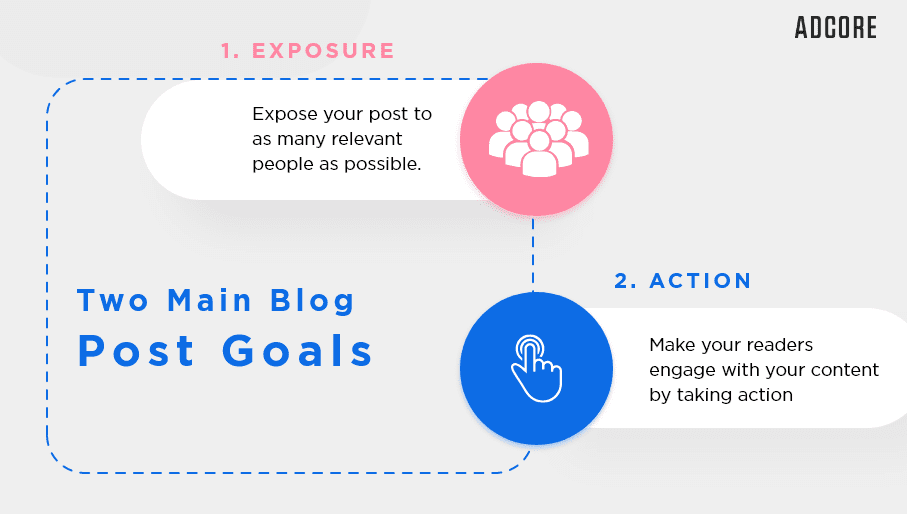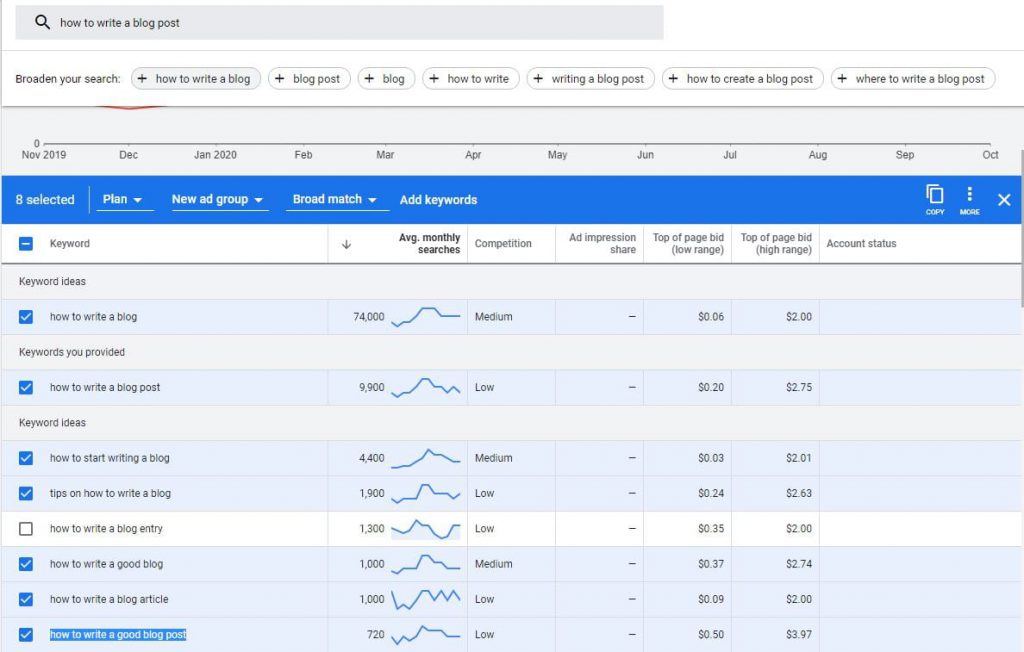How to Write a Marketing Blog Post? 13 Practical Actions to Take Before, During, and After
Learn how to write a marketing post that drives action based on bloggers' best practices. Including free downloadable blog post quality checker and templates.
Writing a blog article comes as a weak spot for many of us, not to mention writing an interesting post that will lure your audience to take action after reading it. Many mistakenly think that it’s either you were born as a talented writer, or you are doomed to struggle with it for the rest of your life.
And although naturally, some are more gifted than others, anyone can create exceptional articles just by practicing it. You’ll be also glad to know many proven techniques will improve this skill tremendously.
Yet, when we transition from blog posts to the more intricate world of research papers, where data, structure, and formality govern, the assistance of a reliable research paper writing service can be an absolute lifesaver. Engaging such services doesn’t only save you from the intricacies of thorough research and formal writing but also ensures that your content is polished, precise, and authoritative, alleviating the stress and allowing you to focus on content creation that aligns more closely with your strengths and interests.
How to Write a Marketing Blog Post?
Why should I invest my time in this?
In the era of information, we all know that content is pivotal for your establishment as an expert, in the eyes of your current and future clients. Among many other benefits, it eventually generates more high-quality leads for less money.
Then how come so many bloggers and companies struggle with content?
All these together led me to the creation of this guide including examples & a downloadable post quality checker for bloggers, particularly marketing bloggers, who are a bit overwhelmed and need some guidelines to start with.
The main goals
But first, let’s set the goals. For the sake of simplicity, when it comes to writing a blog post your two main goals should be (1) getting your article exposed and (2) creating valuable content that will make your readers engage and take action!

NOTE: your time and attention are required here, so make sure you have it before you begin. Otherwise, you can download it for later
Before you start writing a blog post
So, you have a topic in mind and you know more or less what you are going to write about. Now, make sure you are doing all the necessary preparations. That is going to be your key to success.
1. Ask the right questions
- Who is my target audience?
- What is their struggle/problem?
- How can I help them?
- What do I want them to do?
These are the four must-questions you have to ask yourself. My recommendation is to write and answer them. It will give you a better perspective on the subject you are writing about. For example:

2. Do your research
Obviously, good research will make you even more knowledgeable about the subject. You should enjoy the fact that other great people also made their research and have something to contribute to your article.
Remember that you shouldn’t invent the wheel. It’s totally fine to use others’ insights, as long as you give proper credit. Besides, crediting and inserting backlinks (links from other websites) in your post will increase your ranking on search engines.
3. Build a structure
There are multiple types of blog posts. I’m sure you stumbled on ‘How-to posts’, ‘List-Based posts’, and many more. Hubspot provides great blog post templates to kick-off with. Each type has a slightly different structure but, the main principle remains the same.
A good structure consists of:
- Intro: Let people know what they are about to read. The questions that you asked yourself before, will come in handy here. Who is the article intended for? What’s the problem? How will it solve the questions by reading the article?
- Body: Break down your article into points and labels. Each of these described the different aspects of your article’s subject.
- Bottom Line: A short paragraph on what the article was about. Suggest further actions, recommendations, or other related articles worth reading.
Wait! How long should my article be anyway?
That’s the million-dollar question and the answer varies constantly between different SEO experts. Luckily Hubspot’s recent study (based on 50 most-read blog posts), claims that the ideal length for this is between 2,100-2,400 words.
4. Prepare a keyword list
Remember we wanted to get our article exposed? Well, preparing a keyword list and integrating it into your article and headlines is where you influence your organic exposure. And with the right keywords, you will signal to search engines “this content is relevant”.
Basically, we want to know what and how much people are searching for specific words or phrases. There are many tools that will help you find this information such as Google’s KeywordPlanner and SEMrush keyword research tool.
These tools can also find related keywords, thus enriching your article with words and terms you haven’t thought about.
There is a ‘sweet spot’ located between the words and phrases that are highly searched and the ones with low competition. These are the ones you should be after.
Since it’s not always simple to find these perfectly balanced words, many SEO experts recommend going after the low-hanging fruits. These are low searched keywords that are still highly relevant to your audience.

5. Data is everything
Adding data (statistics, graphs, tables, etc.) is a huge plus to your article, especially when it’s displayed with infographics. It shows your readers that you are a factual writer who believes in numbers and that, my friend, is what I call credibility!
Make sure to back up your claims with numbers. Emarketer and Statista are great places to search for data.
Check out how I did the prewriting process for this blog post
During the writing of your blog post
6. Think of your audience
Congratulations! You have created your first notes draft. Now it’s time to actually write your article.
Thanks to the anchors you built beforehand, the writing should go relatively smooth. While you fill in the letters, stop once in a while, and remind yourself of the audience you are writing to.
Some recommend visualizing a persona or someone they know. It goes something like this: Laura; She is a young marketing blogger from Denmark, with red hair and blue eyes. What would she think about that sentence?
7. Make it simple but interesting
On top of tone choices, keeping your sentences simple & clear can highly affect your writing quality as well. In times when everyone is fighting for users’ attention, one complicated sentence might be the end for you, buddy.
Try not to overload your post with fancy words and keep it on eye level. To keep your content fluent and to make sure it is easily readable you can paraphrase your content version online.
Also, frequently break your content to ease the reading. Mobiles shortened the paragraphs even more since the screen’s area is smaller, so keep pressing the ‘enter’ after a max. of 2-3 sentences.
The unwritten contract
Try building anticipation – one of your goals is to make your audience do something, like learn more about your company, click on a CTA, subscribe to the blog, and so on.
So, as I see it, I have an unwritten contract with you, the reader: You give me your attention, therefore, I will build the anticipation (as much as I can) and give you an extra bonus.
The bonus for reading my article for that matter is a free downloadable blog post quality checker, which you can download and use for each of your future articles.
8. Don’t waste your time!
Reading and tweaking each sentence over and over again until it’s perfect before you finish writing the whole article – is a waste of time!
I know that perfection is tempting but, as my CEO always likes to say: “perfection is the enemy of ‘done’”. My advice is to finish your first draft and only then make corrections.
Also, investing in headlines now is a big time-waster. This is something that should concern you only after you finish the post.
After you finish writing a blog post
9. It’s review time
If you made it until the first written draft, that’s already an achievement. Well done.
Now, it’s time to review it. First, go through your post and make sure your flow is clear.
Tweak and make improvements to the text. Try not repeating the same words or terms multiple times. Instead, look for synonyms and integrate them into the text.
10. Integrate Videos & Images
Adding images, videos, or any other visual representation of your ideas, should be an integral part of your article.
Especially videos which are highly beneficial for several reasons. First, they increase the time spent on your post. Also, more senses are involved when watching a video rather than reading a text, which makes people engage much more with your content.
Remember that consuming visual information is easier than consuming textual information. Thus, if you manage to pass the main idea of your post visually -you are on the safe side.
Pro Tip: for SEO reasons, be sure to add alt text to your images. Alt texts provide additional information to Google and can help improve your site’s SEO performance and ranking.
11. The importance of headlines
The art of headlines has been thoroughly discussed for ages. Especially now, when people consume information like never before, impulsively looking for the bottom line, headlines play a crucial role in the success of your post.
There are multiple studies conducted on people’s online reading behavior and the main conclusion is that people tend to scan and jump around the pages nonlinearly. To support this type of reading, one of the primary things we can do is create noticeable headlines.
To begin with, a great headline will determine whether people will click it or not. Then, if your subheadings are good, they will increase the chance your readers will read (or scan) more of your content.
So, how to write good headlines?
Unfortunately, there is no one-fits-all formula, but here are some practical tips:
- Get inspired! Portent title maker is a recommended place to start with.
- Run your headline through Aminstitute. 30%-40% EMV Words (emotional marketing value) is a good score.
For optimal SEO results
- Add your main keyword to your title (H1).
- Add related keywords to subtitles (H2 and H3 tags).
A/B test!
Let’s be honest – few of us can predict what headline will be an absolute killer and what will be a complete disgrace. Eventually, the numbers will determine it much better than any of us can.
Run an A/B test with 2 different versions of your headline and see what works better.
12. Remember that CTA’s are your bread and butter
A marketing blog gives value to its readers, but after all, behind each blog, there is a company that offers products or services. Therefore, an active audience that clicks on your CTAs and becomes a subscriber or a lead, is a great metric to measure the effectiveness of your content.
Don’t be afraid to insert CTA’s! From a quick poll I made within our own company, I found that people didn’t mind CTA’s that appeared between the lines. On the other hand, they were irritated by pop-ups or anything similar that interrupted their reading.
Decide on the desired action and make sure you insert at least 2-3 of them in your article
13. Use another pair of eyes
Finally! Your new post is born – and your name is assigned to it. At this point, you would want at least another pair of eyes to review it.
My two cents here are to have one person that will go over your grammar and spelling mistakes, and at least one person who will give you feedback regarding the quality of the content.
Bottom Line
Like everything in life, writing content requires practice. Writing good content requires a lot of reading and learning as well.
Try following this guide and invest most of your time and thought in planning. Before you start writing there are several practical things you can do such as building the structure or asking the right questions. In turn, it will help you significantly and make your life easier.
Make sure to put your mind to powerful headlines, which include your main keywords, and A/B test what works best. That is part of SEO optimization which you shouldn’t neglect – it will affect your ranking and exposure.
Encourage your audience to take action! You worked hard and in many ways, this is your reward and insurance certificate that you did well.
And finally, remember that it gets easier every day!
PPC Marketing Expert?
Get things done with Adcore Marketing Cloud.
5 essential PPC tools under one roof.
Related Articles



